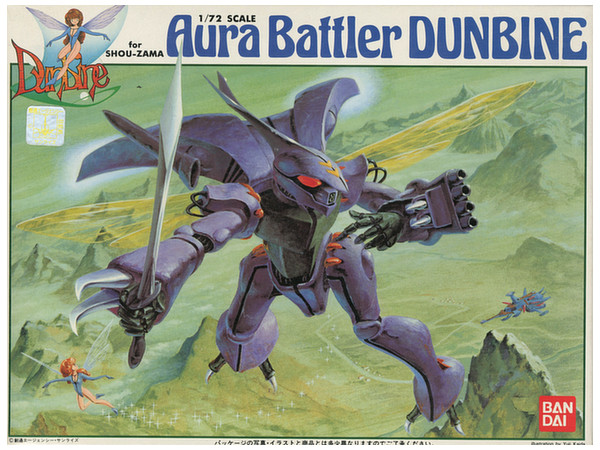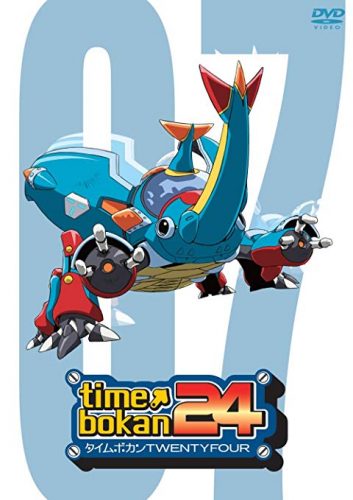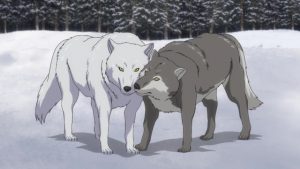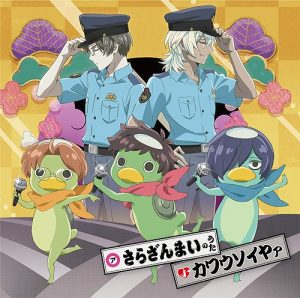
One of the many things that Japan is notable for is its large variety of insects and their importance in Japanese culture. Among the strongest examples of this Japanese fascination are beetles, which are frequently kept as pets and feature prominently in a variety of Japanese media, including games and anime! Join us in our exploration of beetles in this edition of Anime Culture Monday.
Species Specifics - Kabuto & Kuwagata
While many kinds of beetles can be found in Japan, the two most important culturally are the kabutomushi and kuwagatamushi, also known as the Japanese rhinoceros beetle and Japanese stag beetle respectively in English.
Considered the “king of insects”, kabutomushi are the most prized Japanese beetle and get their name from the large horns of the males which are said to resemble the helmet of a samurai (kabuto means helmet). They are quite impressive with two sets of forked horns on the males, a sleek and shiny dark brown body with a black head and legs, powerful wings, and large eyes. They love to eat tree sap and sweet fruits and can be found in Japanese forests during the summer.
Chief rival kuwagatamushi beetles are also quite popular. Instead of horns, the males of this species have two enlarged mandibles that resemble deer antlers. Their name also references samurai, with the ‘kuwagata’ referring to the type of crest often seen on samurai helmets. They are pretty similar to rhinoceros beetles in terms of habitat, diet, and behaviour but have the ability to hibernate during the winter, allowing them to live for up to 8 years while rhinoceros beetles rarely survive much beyond one season. They are also more uniformly black in coloration.
Insect Pets & Beetle Battles!
As we mentioned before, these beetles are often kept as pets in Japan. They are also popular for use in insect fighting. Males of these species will wrestle each other in the wild to compete for mating, similar to other animals like deer and rams. Many Japanese children like to go hunting for these beetles in the summertime to keep them as pets and then train them to compete in fighting tournaments. This is so widespread that live beetles and care supplies can be found in many department, outdoor, and pet stores in the summer. There are even beetle vending machines!
Beetle fights typically involve placing two beetles on a log with the winner flipping or knocking over the loser. Beetle enthusiasts spend considerable amounts of money and time in caring for and training their pets to increase their performance. Betting on these fights is also common, especially in the Ryukyu Islands. While most popular among young boys, catching and raising beetles is not an uncommon hobby for many Japanese as there is less of a cultural aversion to insects compared to many other cultures.
Beetles in Modern Japanese Pop Culture
The strength and tough, vivacious nature of kabuto and kuwagata beetles have made them a popular source of inspiration for use in Japanese media, arguably most noticeably in Tokusatsu series like Godzilla’s Megalon and the Kamen Rider series, including Kamen Rider Kabuto and Kamen Rider Stronger.
Combining beetles with robots and mecha is also very common in Japanese video games and anime. Gundam creator Yoshiyuki Tomino’s anime series Aura Battler Dunbine is a notable example with its cool, decidedly beetle-like mechs as are many characters in the Medarot (Medabots) game and anime franchise, including the series’ main mascots Metabee and Rokusho. Several ZOIDS mecha are based on beetles as well, like Saicurtis (red kabuto) and the Double Sworder (blue kuwagata). Yet another example includes the titular Time Mechabuton time machine which is built in the shape of a kabuto beetle in Time Bokan.
Many Digimon also draw inspiration from beetles. Kabuterimon and Kuwagamon which, as you might guess by their names, are explicitly based on the two popular beetle species and have intense rivalry towards each other. Some more obscure examples include Cave’s cult hit shooting game Mushihimesama (literally Insect Princess) which stars a princess named Reco who rides a giant golden kabuto beetle named Kiniro into battle against hordes of other insects and Misuzu Kamio’s introduction in Visual Arts/Key’s visual novel (and later anime) Air where she encounters a female rhinoceros beetle.
Final Thoughts

While the idea of fascination and even affection for insects might sound strange at first, the Japanese appreciation of beetles in both everyday life and in popular media offers a new way to think about the so-called creepy-crawlies. How do you feel about beetles? Let us know your thoughts and favorite beetle scenes or characters in the comments section below and be sure to stick around Honey’s for more cool facets of Japanese culture, anime, and more! Buzz off! See you next time~
Recommended Post
Ookami - Wolves in Japanese Culture & Anime
Recommended Post



